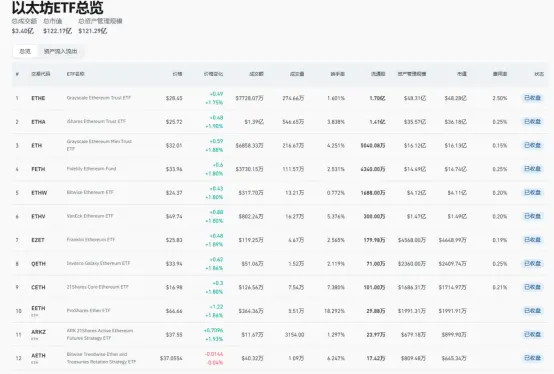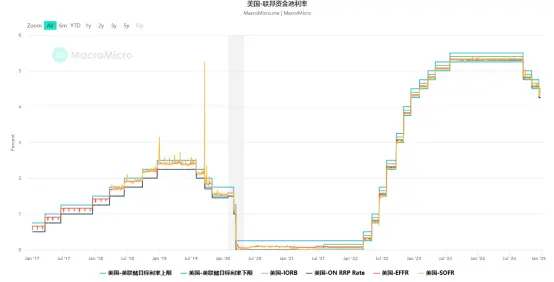An article reviewing the big crypto events in 2024: Bitcoin shines, the crypto market lurks in the abyss

Reprinted from chaincatcher
12/31/2024·4MAuthor: Gyro Finance

2024 is an exciting year for the crypto industry. During this year, cryptocurrency entered the mainstream and institutionalization, compliance and politicization became the core narrative. Bitcoin made headlines of $100,000, announcing the end of the stigmatization of the crypto market, and digital gold was shining. , the new cycle is slowly beginning.
But crypto is much more than Bitcoin, and the market is much more than institutions. The switch of the spotlight has recorded the changes of this year. Bitcoin is a good dancer on the stage, but it is not always the protagonist. Every month of this year, the encryption market will usher in new topics and headlines, and technologies, projects, communities, and characters will appear one after another, running through the ups and downs of 2024, and also writing a colorful chapter for the arrival of 2025. Footnote.
Looking back on the old year and welcoming the new year, the crypto market is still lurking and has unlimited potential in the future.
Bitcoin spot ETF approved in January
In January, spot ETFs allowed institutions to officially board Noah’s Ark in the crypto world. On January 10th, Eastern Time, the U.S. SEC announced that 11 spot Bitcoin ETFs were officially approved for listing. Approved spot Bitcoin ETF issuers include Grayscale, Bitwise, Hashdex, iShares, Valkyrie, Ark 21Shares, Invesco Galaxy, VanEck, WisdomTre, Fidelity and Franklin.
For the crypto market, the Bitcoin ETF is undoubtedly a feat of witnessing history. After 10 years of protracted fighting with the SEC, the encryption world has finally been recognized by regulation, and the digital asset market has entered a new chapter. After this, Bitcoin was officially recognized as a legal and compliant investment product, and massive funds from traditional institutions entered the market, further promoting the compliance development of the crypto market.

As of December 31, according to data from Coinglass and SOSOvalue, the cumulative total inflow of Bitcoin ETFs reached US$35.27 billion, and the total net asset value exceeded US$109.532 billion. However, with the continuous growth of Bitcoin ETFs, institutions have taken advantage of the trend to replace the miners who once dominated the market and become the controller of Bitcoin prices. The so-called changes of the times may be just like this.
Ethereum Cancun upgrade in March
After experiencing a relatively dull February of the New Year, Bitcoin and Ethereum came to the forefront again in March. With the influx of ETFs, the price of Bitcoin continued to rise, successfully breaking through $70,000 on March 8, setting a three-year record high. At that time, the market already believed that $70,000 was the high point of Bitcoin, but did not realize that this was just a silent milestone in price.
But looking at Ethereum, despite the concentrated narrative, the price is still mediocre. But as the leader of the industry, construction is the theme that Ethereum pays most attention to. On March 13, Ethereum successfully completed the Cancun upgrade and successfully introduced the data unit Blob of the Ethereum scalability solution (protodanksharding), ushering in the era of fee reduction for Layer 2.

Up to now, all mainstream Layer2 such as Optimism, Starknet, Base, zkSync, Zora, Mode, etc. have adopted blobs. Blobscan data shows that since the Cancun upgrade, as of December 30, the total number of Ethereum blocks has exceeded 1.2 million, the total number of transactions has been 2.4 million, a total of 4.9 million Blobs have been used, and Blobs have saved 3,008 ETH. Gas cost. However, it is worth noting that the liquidity of the L2 network is divided into multiple sub-networks. The L2 fee reduction has seized part of the value of the main network, making the competition between Ethereum and L2 increasingly obvious.
Bitcoin halving in April, Hong Kong virtual asset spot ETF approved
One of the most important things to happen in April is the Bitcoin halving. At 8:09 on April 20, Bitcoin successfully completed its fourth halving at block height 840000. The mining reward of the Bitcoin network was halved from 6.25 BTC to 3.125 BTC. The last halving occurred on May 11, 2020. day. The impact of halving on prices is undoubtedly long-term, and in terms of affected groups, mining companies, as the main force in mining, have been the most widely affected. Mining companies have launched a wave of consolidation, and the head effect has further intensified. Leading mining companies such as Marathon, CleanSpark, and Riot are rushing to increase production capacity. High-computing power equipment and low energy costs have been combined. Competition in the industry has become fierce, and some mining companies have begun to shift to a more competitive environment. The field of AI.

Another major event in April was the passage of Hong Kong’s virtual asset spot ETF. On April 15, the first batch of virtual asset ETFs was publicly announced to be approved. On April 30, six Hong Kong virtual asset spot ETFs were listed on the Hong Kong Stock Exchange. Three fund companies, China Asset Management (Hong Kong), Boshi International and Harvest International, were listed. Major Issuers. In fact, after the declaration in December 2022, the Hong Kong Web3 market turned from hot to cold. Despite frequent policies, the market has always remained hesitant. The virtual asset ETF is an important milestone for Hong Kong. Therefore, before the announcement, despite frequent negative calls from the market, But it still holds relatively bright hopes, and even believes that this move may be a precursor to mainland China's opening up. But the facts have obviously poured cold water on it. Not only are capital channels limited, but also affected by compliance costs. Compared with similar products in the United States, virtual asset spot ETFs have higher rates, and the financing of the two is far different. According to SOSOVALU data, as of December 27, the total net assets of Hong Kong Bitcoin spot ETFs were only US$409 million, and the total number of Bitcoins held was approximately 4,290. In June, the first anniversary of the official implementation of Hong Kong’s new encryption regulations, multiple crypto-native exchanges failed to enter Macheng, which also raised more questions in the market. It can be seen that Hong Kong 's Web3 still has a long way to go, but with the strong energy of traditional finance, Hong Kong still hopes to overtake the curve. Stablecoins and RWA will become Hong Kong's key paths in 2025 .
Ethereum Spot ETF Survived from Despair in May, CZ Risk Hearing
In May, the focus returned to Ethereum. The Ethereum spot ETF, which was thought to be hopeless, turned out to be a dark horse this year. On May 24, according to official documents, the U.S. Securities and Exchange Commission (SEC) has approved the New York Stock Exchange, Chicago Board Options Exchange, and Nasdaq’s plans for spot Ethereum ETFs, namely the issuer’s Ethereum spot ETF 19b- 4 (Exchange Rules Change) Application. Compared with Bitcoin, the approval of Ethereum's key processes reflects more changes in attitudes at the regulatory level. It not only eliminates the historical baggage of its securities attributes, but also symbolizes a turning point in the openness of US supervision. Other decentralized projects are expected to usher in The regulatory relief also promptly rescued the crypto market that was under the siphon effect of Bitcoin. Looking at every bull market, the rise and overflow of Ethereum is the key sign of sector rotation. On July 23, the Ethereum spot ETF was officially approved. According to Coinglass data, so far, the cumulative total inflow of the Ethereum spot ETF has reached US$2.68 billion, and the total net asset value has exceeded US$12.11 billion. But it can be seen that Ethereum is far from attractive enough to compare with Bitcoin in the eyes of institutions.

The headliner in May is undoubtedly CZ. After a sky-high settlement last year, CZ faces a sentencing hearing this month. As early as April, in order to support this representative figure, the crypto community launched a massive support. 161 letters of support headed by his wife He Yi were sent to the hall, witnessing the rare trust and true love in the currency circle. This move was successful in the end. Compared with the SBF's sentence of more than 100 years, the four-month sentence was not too long. On September 28 this year, CZ was released from prison, and BNB rose first, reflecting its strong community influence.
LayerZero and ZKsync airdrops caused controversy in June
In June, airdrops became the main theme of the market. The LayerZero witch hunt triggered widespread discussion and brought to the stage for the first time the intensified head-on conflict between the project and the Lu Mao Party. Even the Lu Mao Party, which is evolving towards professionalism, institutionalization, and scale, has no balance between the project side's offense and defense. Not taking advantage. On the other hand, although ZKsync has been controversial due to its rat position, the new standard of capital retention it brought has also left a profound impact on subsequent airdrops. In the long run, the reduction in short odds, the increase in complexity and investment funds The increase in airdrops will become a trend, and we have to admit that the threshold for individuals to get rich through airdrops will become higher and higher. In addition, the weakening of macro expectations and the capitulation of miners also directly led to the first June 18 earthquake in the crypto market this year. Bitcoin fell below $65,000 at that time, and most altcoins fell by more than 20%.
July 7.5 plummeted, VC tokens fell into public opinion, and photos of
Trump’s life were released
After 6.18, 7.5 came again. Under the influence of Mentougou repayment and the German government’s currency purchase, the encryption market once again ushered in a washout. Bitcoin fell below $60,000, and the price returned to the level at the end of February. Since then, until the middle of the year, the term bull market seemed to have disappeared from the crypto market, and complaints became a reality. VC tokens and exchanges were the first to bear the brunt, and the whirlpool of public opinion continued to ferment. But on July 16, Trump's life photos were released, which not only illuminated his personal electoral path, but also brought a glimmer of hope to the encryption market. After that, Trump appeared at the Bitcoin Conference and made ten inspiring promises including strategic reserves, the U.S. Crypto Center, and the outgoing SEC chairman, and successfully won the support of the crypto world.

The arrest of Telegram CEO Pavel Durov in August made headlines
In August, Telegram hit the headlines and dealt a blow to the TON ecosystem. On the evening of August 24, French TV revealed that Telegram founder and CEO Pavel Durov was arrested at the French airport. On the day of the incident, Toncoin fell by nearly 11% in 24 hours, and TON TVL fell by as much as 57.62% in a single day. In view of TON's independent ecological attributes, the price recovered quickly after the short-term impact. But the Telegram incident has once again made the market think about decentralized social networking. Under the banner of defending freedom of speech, finding a balance between order and freedom is the next goal of the encryption market.
In September, the Federal Reserve cut interest rates for the first time
in four years, starting a rate-cutting cycle.
In September, the crypto market’s interest rate cut, which could be described as a welcome relief after a long drought, finally came as scheduled. On September 18, local time, the US Federal Reserve announced that it would lower the target range of the federal funds rate by 50 basis points to a level between 4.75% and 5.00%. This is also the first time in four years that the Federal Reserve has cut interest rates. This marks the U.S.'s official shift from the tightest rate-raising cycle in 40 years since 2022 to a rate-cutting cycle. As of now, the Federal Reserve has successfully achieved three consecutive interest rate cuts, with the federal funds rate target range reaching 4.25%-4.50%. The Federal Reserve's cumulative decrease in this interest rate cutting cycle has reached 100 basis points. It must be admitted that macro easing provides a solid foundation for the rise of the crypto market.

The main theme of the US election in October and November is that Trump,
the “Bitcoin President”, won the White House.
In October and November, political circles dominated the crypto headlines. On November 5, the world's spotlight was on the U.S. election. Trump successfully won more than half of the electoral votes, locking in the victory of this U.S. presidential election and officially becoming the 47th President of the United States. The coming to power of President Bitcoin sounded the clarion call for the bull market, and against the backdrop of the most supportive Congress in history, crypto regulation has also ushered in a new era. Subsequently, Bitcoin soared, exceeding $90,000 in November, surpassing silver for the first time and becoming the eighth largest asset in the world by market capitalization. On the other hand, Dogecoin is also taking advantage of the trend, and the Government Efficiency Department led by Musk has been established, which has made PolitiFi very popular. In addition, there are constant hot topics in November. The theft of DEXX has cast a shadow on the Chinese MEME circle, the DeSci track has jumped due to the celebrity effect of CZ and Buterin, Sun Yuchen’s sky-high price banana has been out of the circle in traditional media, and the derivative dark horse Hyperliquid native generation Coin HYPE is online, and various events have caused FOMO in the crypto world.

Martial law in South Korea in December, Bitcoin exceeded 100,000 US
dollars, SEC chairman changed
At the beginning of December, the martial law incident in South Korea dominated the headlines. Bitcoin suffered a short-term spike of 30%, and XRP oversold by 60%. The world once again witnessed the influence of the political situation on the encryption field. However, it is worth noting that a large amount of money poured into Upbit to successfully pick up mistakes, and sometimes it is the key to making a small profit.
On December 5, Bitcoin ushered in a historical milestone, officially breaking through the $10 mark and embarking on a six-digit road. It not only rectified the name of digital gold, but was also officially recognized by the world for its value storage function, realizing the transformation from experiment to asset. , and then transforming into good assets, announcing the staged victory of the financial experiment initiated by Satoshi Nakamoto.

The prerequisite for achieving this goal is favorable policies. As he approaches taking office, President Trump also begins to announce personnel arrangements and policy strategies. Throughout December, the crypto market speculation focused on Trump. First of all, SEC Chairman Gary Gansler, who has been suffering from crypto for a long time, announced that he will resign on the President’s Day. The new SEC Chairman will be Paul Atkins, nominated by Trump. With the official nomination on December 5, the crypto market has become more enthusiastic about this important issue. The new chairman, who is obviously pro-crypto and experienced, priced in advance and took advantage of the trend to allow Bitcoin to reach $100,000.
The good news continues. On December 6, Trump nominated David O. Sacks as the White House Director of Cryptocurrency and Artificial Intelligence. This is the first time that the encryption field has entered the White House, and it is juxtaposed with the strategic industry of artificial intelligence, which fully reflects the special characteristics of the country. Trump’s emphasis on the crypto space. Institutions caught wind of this, and altcoin ETFs were put on the agenda. The altcoin season has quietly arrived, and the crypto market sector has generally risen. The FOMO mood was briefly interrupted. On December 11, Microsoft shareholders voted against the Bitcoin investment proposal. Coupled with the emergence of quantum chips, which caused industry concerns, Bitcoin suffered a sharp decline and the market gradually moved to sideways oscillations.

The last good news before Christmas is that Microstrategy has landed on the Nasdaq 100 Index. As the first crypto component to be included in the index, Microstrategy reflects the continued growing influence of the crypto field. It not only broadens investor channels, but also marks the A watershed moment for enterprises to enter the traditional financial world.
Christmas has arrived as scheduled, the news has come to an abrupt end, funds have been conservatively flowing back, and the market is mostly in a downward trend. However, it is obvious that the crypto bull market has just begun, Trump has not officially taken office, and the macro environment continues to improve. 2024, the year of hidden dragons in the abyss, is about to pass. In 2025, seeing dragons in the field may be the next step for the encryption market.




 panewslab
panewslab